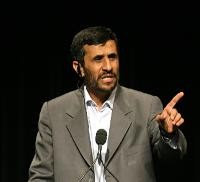Iranian President Mahmoud Ahmadinejad, who has represented the face of Iran for the West for more than half a decade, is on his way out of power in Tehran. Whether or not the ayatollahs formally push him out of office is yet to be seen. But for practical purposes, the Ahmadinejad era of the Islamic Republic's history is coming to an end.
Two years ago, during the height of the pro-democracy protests that followed Iran's presidential elections, most of the country's most powerful clerics stood steadfastly behind Ahmadinejad. As millions of Iranians took to the streets accusing Ahmadinejad and his supporters of stealing the election, Supreme Leader Ayatollah Ali Khamenei threw his weight fully behind the president, displaying a unified front that relentlessly beat back, brutally suppressed and ultimately silenced the so-called Green Movement.
Now, the supreme leader and the clerical establishment have lost faith in Ahmadinejad. They have become convinced, not without reason, that Ahmadinejad wants to tilt the country's political balance and reduce their influence. The man clerics expected to act as a caretaker, a manager they could control, grew increasingly powerful with their support. He started moving to reduce the power of Shiite clerics, whose dictates are the last word under Iran's system of Velayat-e-Faqih, or Guardianship of the Jurist. In Iran's unique hybrid system that blends theocracy with a dash of democracy, the battle for power is between theocratic rulers and the purportedly elected executive. In a cruel irony to the Greens, it is Ahmadinejad who represents the democratically elected side of the system in this battle, the side that stands no chance.

